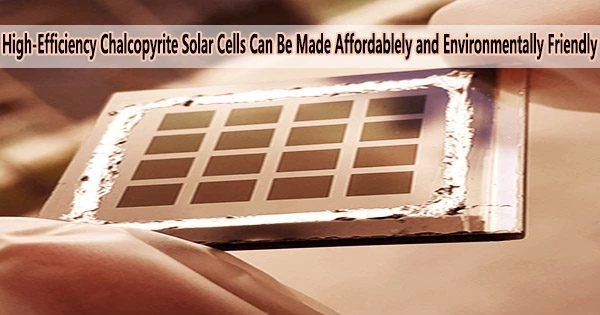Chalcopyrite solar cells, also known as copper indium gallium selenide (CIGS) solar cells, are a type of thin-film solar cell that is becoming increasingly popular in the photovoltaic industry. Chalcopyrite solar cells are made by depositing a thin layer of copper, indium, gallium, and selenium onto a substrate, which can be made of glass, plastic, or metal.
To fulfill the world’s population’s rising energy needs, clean, sustainable energy solutions are crucial. Promising possibilities for reducing carbon emissions and achieving carbon neutrality are high-efficiency solar cells.
In this context, solution-processed copper indium gallium sulfur diselenide solar cells (CIGSSe) have drawn a lot of attention due to their outstanding photovoltaic characteristics, including high visible light absorption, stability, and programmable bandgap. However, large-scale, practical applications are limited by a two-fold challenge.
When compared to expensive, vacuum-based fabrication techniques, solution-processed copper indium gallium sulfur diselenide solar cells have a much lower power conversion efficiency (PCE). Moreover, solution-based methods rely on solvents that are hazardous.
To this end, researchers at Incheon National University, Korea, have developed a cost-effective, eco-friendly fabrication technique using aqueous spray deposition in an air environment that does not require a vacuum. This novel approach yields a relatively high PCE of over 17%.
First off, solution-based CIGSSe manufacturing results in very low power conversion efficiency and frequently requires unfriendly solvents. Second, fabrication techniques rely on pricey vacuum environments that cause a significant material loss in order to obtain higher power conversion efficiency.
We carried out spray deposition in an air environment without using any high vacuum facility, which significantly reduces fabrication cost and thus makes the fabrication technique more practical and competitive in the industry sector.
Professor JunHo Kim
To this end, a team of researchers led by Professor JunHo Kim from the Global Energy Research Center for Carbon Neutrality, Incheon National University, Korea has developed a low-cost and eco-friendly fabrication method of high-efficiency CIGSSe solar cells.
In a study made available online on 4 September 2022 and subsequently published in volume 32 Issue 46 of Advanced Functional Materials on 10 November 2022, the researchers used aqueous spray deposition in an air environment and developed a CIGSSe solar cell with power conversion efficiency (PCE) larger than 17 %.
“For spray solution, we used deionized water, which is eco-friendly and cheapest solvent till date,” explains Prof. Kim.
Moreover, for the optimization of thin-film solar cells, traditional solution-based fabrication procedures rely on potentially harmful, cadmium-based buffers. The researchers in this unique procedure utilized a cadmium-free, environmentally acceptable alternative, indium sulfide-based buffer.
The researchers further studied the effects of zirconium alloying on the buffers made of indium sulfide. Interestingly, the scientists discovered that zirconium alloying raises the electron concentration in the buffer.
Moreover, this method “passivates” or reduces defect states in the CIGSSe absorber, optimizing the charge transfer between various interfaces, leading to enhanced PCE.
By alloying the CIGSSe absorber with potassium, the researchers were also able to produce a higher PCE of more than 17% and even more defect passivation. The manufactured cell has the ideal bandgap for use in tandem or bottom cells, which are high-efficiency applications.
Due to the fact that it doesn’t require a vacuum atmosphere, this revolutionary technology is affordable and simple to scale. As Prof. Kim observes, “We carried out spray deposition in an air environment without using any high vacuum facility, which significantly reduces fabrication cost and thus makes the fabrication technique more practical and competitive in the industry sector.”
This innovation enhances both the performance and manufacturing of CIGSSe solar cells. The use of these cells in integrated photovoltaic devices, automotive integrated photovoltaic devices, and as power sources for internet of things devices will be revolutionized as a result.





